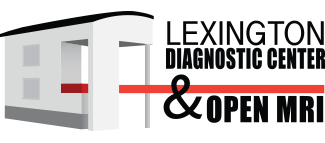When you hear the word ultrasound, what springs to mind? If you’re like most, it’s probably the joy of a new life, the somewhat blurry images of babies yet to be born. As important, and as widespread, as fetal ultrasound is, there’s so much more to it than that!
Mom-to-be ultrasounds aside, this imaging technology is the second- most commonly used diagnostic imaging procedure in the United States. It has applications in diagnosing and treating heart disease; in understanding conditions affecting the circulatory system; determining the nature of various lumps and bumps; helping physicians deliver medications directly to injured areas; breaking up kidney stones; and more.
Physicians and healthcare providers turn to ultrasound so often because of its utility; its safety; the fact that patients are not exposed to radiation; its ability to record the functioning of organs in real time; its portability; and its affordability. Ultrasound technology is so useful that it has been labeled the stethoscope of modern medicine!
Principles and history of ultrasound?
As the name implies, ultrasound makes use of sound waves at very high frequencies. The principle is very similar to the way whales, dolphins, bats and other animals locate objects and navigate through their environments.
During an ultrasound, high-frequency sound waves (1 – 10 megahertz) are directed at the body structure using a hand-held device called a transducer. As sound waves bounce back, the transducer picks up the echoes and feeds data regarding their speed and intensity into a computer. The computer analyzes this data to create the ultrasound image.
Although the ancient Greeks realized the power of sound, it wasn’t until the early 20th Century that knowledge and need converge to create this powerful technique. Blast shocks from the bombing of Britain during World War II often resulted in damage to internal organs. The problem was so vexing that Royal Army Surgeon John J. Wild began searching for a non-invasive way to evaluate these injuries. Wild’s attention turned to ultrasound, which up to that time had been used in military and industrial applications.
After the war, Wild emigrated to the U.S., where he continued his work. In 1949, he discovered that sonic energy was reflected as echoes from soft biological tissues. It was an accidental discovery, but one that earned Wild recognition as the father of medical ultrasound.
Ultrasound today
The tremendous versatility and portability of ultrasound technology has made it an extremely valuable testing modality. Today, ultrasound machines can be found in the battlefield, helping to evaluate injuries and trauma and speeding appropriate treatment for military personnel.
Closer to home, Lexington Diagnostic Center provides this imaging technology in its comfortable and convenient center on Harrodsburg Road. Here, ultrasound is used to evaluate gallstones; kidney tumors; kidney stones; liver cysts and other tumors; the thyroid; blood clots in the legs; testicular masses; and abnormalities in the ovaries and uterus. Ultrasound is also used to evaluate hip problems in children and in the diagnosis of circulatory conditions.
Choosing Lexington Diagnostic Center for your medical imaging is the right choice in so many ways: convenience, comfort, quality, satisfaction, and price. In addition to ultrasound services, Lexington Diagnostic Center offers MRI, CT, nuclear medicine studies, DexaScan, and general x-ray testing. When your doctor orders a diagnostic imaging exam for you, remember – you have a choice. Call Lexington Diagnostic Center at (859) 278-7226 to learn how we can help you!
